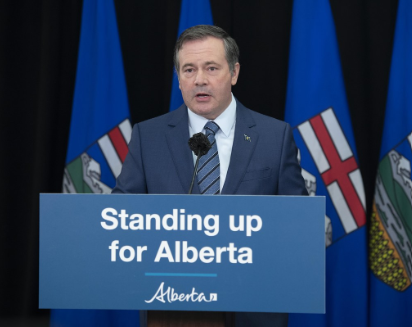The Equalization Transfer Program is a welfare program run by Canada’s federal government to “reduce the difference in revenue-generating capacity” between its provinces. This means that funds are reallocated to poorer provinces on a per capita basis to ensure that all Canadians have similar access to provincial government services at comparable prices without vastly different levels of taxation. Depending on each province’s abilities, services like education or health care could vary greatly in price if not for this aid from the federal government. Moreover, the Equalization payments are unconditional, meaning that each province decides how to use the funds they receive.
So how does this program work? First, the average fiscal capacity across all provinces is found and each province’s fiscal capacity is compared to it. Provinces gain revenue from taxes on personal income, business income, consumption, property, and natural resource revenues. If their fiscal capacity is found to be below average, then the province is eligible for the Equalization Transfer Program. The federal government then determines how much money they can give to each province on a need basis, compared to the remaining eligible provinces. This money comes from the federal government’s general revenues, which are mainly from federal taxes. As all Canadians are subject to the same federal income tax system, all contribute, though at varying levels.
Since Canada’s economy across the board doesn’t fluctuate greatly from year to year, the provinces that receive transfer payments versus those that don’t also usually don’t change. For the year 2024-25, Prince Edward Island, Nova Scotia, New Brunswick, and Manitoba are all set to receive sizable Equalization payments (over $3,000 per capita), followed by Québec (approximately $1,500 per capita), while Newfoundland and Ontario will receive smaller ones ($412 and $38 per capita). In contrast, Saskatchewan, Alberta, and British Columbia won’t receive any money through the Equalization Transfer Program.
This difference in money distribution has thus resulted in strife and resentment from provinces like Alberta, which has worsened already tense regional relationships. In 2021, the province held a referendum asking “Should Section 36(2) of the Constitution Act, 1982 – Parliament and the Government of Canada’s commitment to the principle of making equalization payments – be removed from the Constitution?” to which 62% of participants voted in favour of removing the program. Many Albertans have expressed the feeling that money is being funnelled from their province to smaller ones like Québec, however, this ignores the per capita basis on which the Equalization Transfer Program functions. Alberta’s major industry is in oil and gas, resulting in a higher income per capita than provinces like Québec though their gross domestic product may be similar. This is due to a much higher population in Québec (8.8 million in comparison to 4.6 million in Alberta). Aside from the referendum of 2021, Alberta has also suggested reforms to the formula used by the federal government to determine Equalization payments. Ultimately, it seems the primary argument of Albertan politicians is to end or decrease the strength of the Equalization Transfer Program as it disproportionately hurts wealthier provinces and disincentivizes the poorer ones to work on generating their own revenue instead of taking government handouts.
After Alberta’s referendum, not much change occurred to the Constitution or the opinions of the federal government. Alberta Premier Jason Kenney described the referendum as “leverage for constitutional negotiations” and a way to get the attention of the federal government, however, when looking at the total population of Alberta in comparison to the rest of the country, these numbers don’t stand out in the same way “62% of participants” might look. It’s also notable that this was 62% of those who voted on the referendum, which doesn’t reflect the whole population of the province either.
Viewing this uniquely Canadian issue as an outsider from the United States, it’s fascinating to see how regional politics clash and cause tension. While the effectiveness of the transfer program cannot be denied, it would also be remiss to ignore the concerns of Albertans. Premier Kenney best reflected the views of his province’s constituents during his press conference in 2021 where he said that Alberta’s referendum really boiled down to “a strategy to elevate Alberta’s fight for fairness in the federation to the top of the national agenda.” It’s difficult to say whether or not a solution can be found that makes all provinces happy when many have opposite goals and standpoints on issues of money distribution and federal resources, however, hopefully through further discussion, it may one day be possible.
Edited by Ailish McGiffin

Hannah Hipólito is in her first year at McGill University pursuing a Joint Honours BA in Political Science and Sociology. She enjoys researching and writing about public policy and culture, especially in relation to education, civil rights, and gun control.

